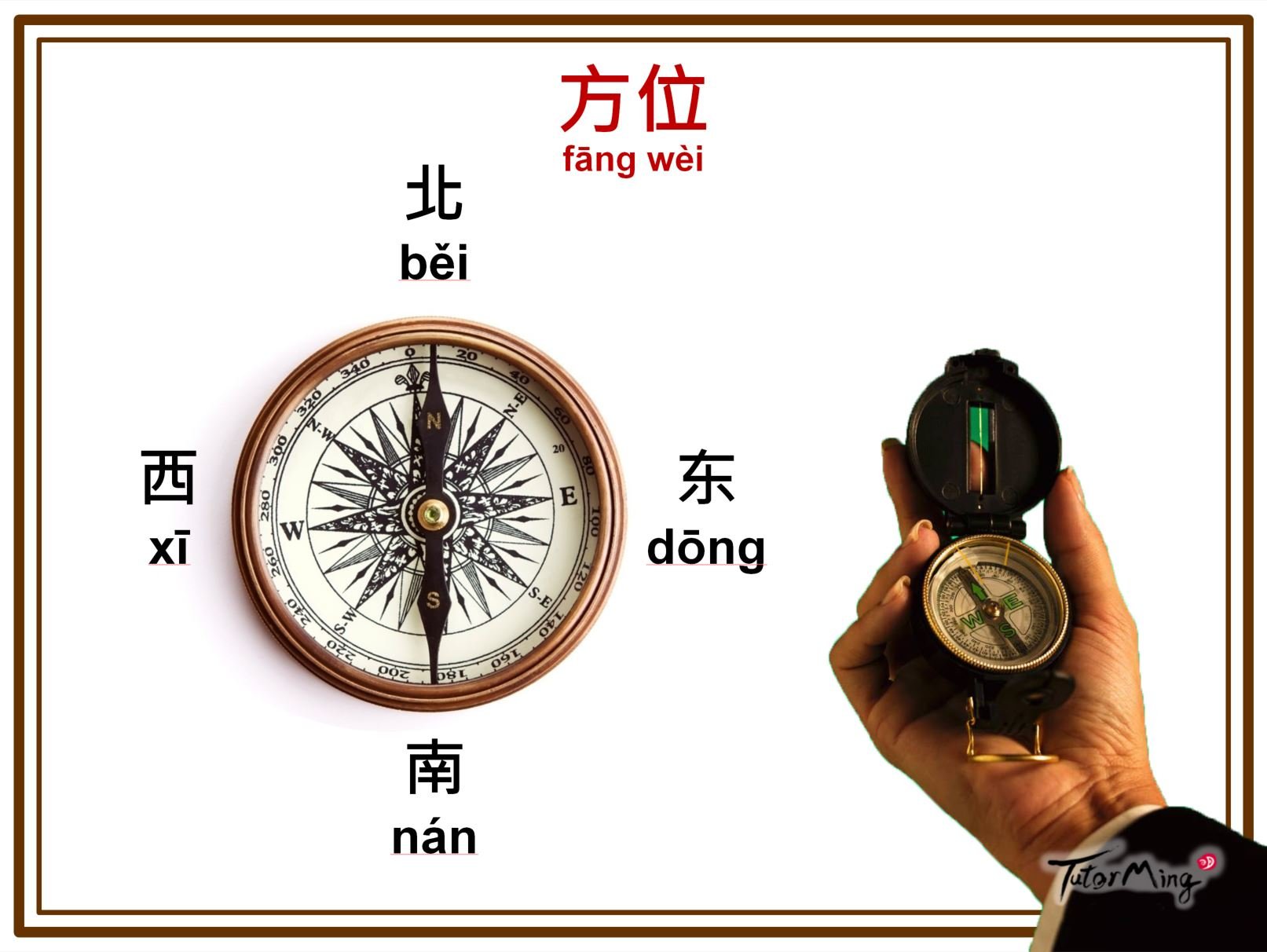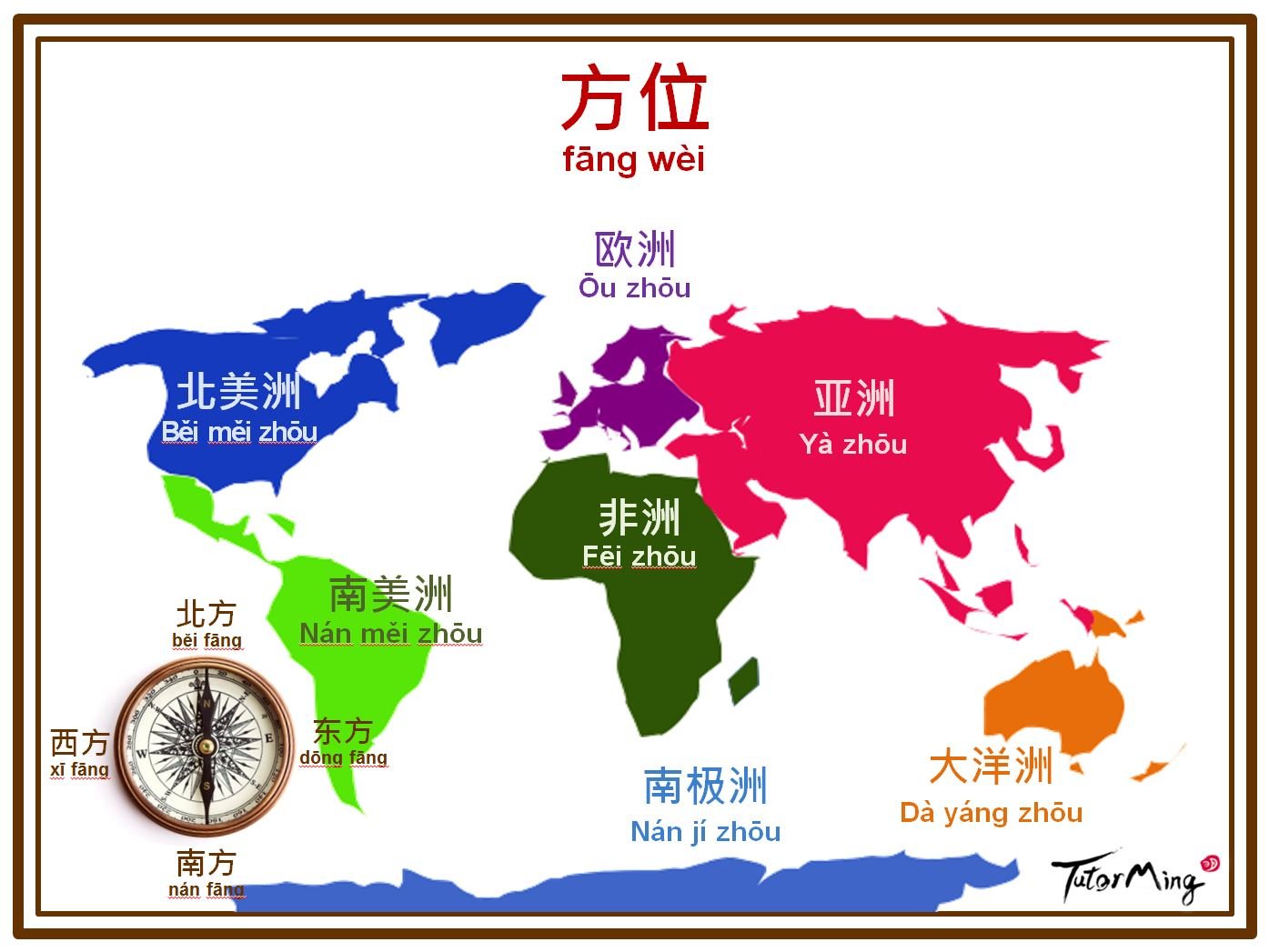My name is Efrain, and this is my weekly column on my journey to becoming fluent in Chinese with TutorABC Chinese. You can check out why I want to learn Chinese in my introduction here.
With travel comes culture, and with culture comes language. I have been fortunate enough to have traveled to three different continents in the world, and plan to visit all seven continents some day. China is my next destination.
Once I get there, I may want to talk about my travels to other people in Chinese! To do that, I will need to know how to express where I've been, where I am from, and where I want to go. So I was very happy that this week's lesson had to do with world geography and cardinal directions on a compass rose.
Related: What To Pack Before Traveling to China?
方位 Fāng Wèi: Direction

The world map is used to help people understand their location in relation to the rest of the world, and the compass is a guiding tool that comes with that. However, I was surprised to learn some of the cultural differences that came with learning the new terms. For example, in English we list directs as, "North, south, east, west." That sounds right. But in Chinese, you always list directions in a clockwise manner: "东(Dōng), 南 (Nán), 西 (Xī), 北 (Běi)." East, South, West, North. My Chinese teacher told me that this helps you remember how each direction falls on a compass.
Another interesting thing I learned was that in Chinese, "东 East" and "西 West" always come first when describing intermediate directions. In English, it's the reverse. So if I were to say "southeast," in Chinese, it would be "东南 (dōng nán)" or literally, "east-south."
世界地图 (Shì Jiè Dì Tú): World Map

This map was surprising to me. I learned that there are different cultural perspectives of world. Apparently, the context of a continent could be debatable? Oceania is a continent? Central America is part of South America?
I once had a similar discussion with my European friends when I was in college. Who knew the same would be taught to Asian cultures! The reason has to do with cultural and historical identity to which the continents are grouped by. Linguistically speaking, I can see why Mexico could be considered part of South America, but it's still odd to me.
New Sentence Structure: _______ 在 zài ______ 的 de _______ (Direction)
In this lesson, I learned how to say where a country or region is located relative to another region using "在" and “的." The sentence structure given to me was _______ (1st Country) 在 zài _______ (2nd Country) 的 de _______ (Direction.)
For example, "非洲在欧洲的南方 (Fēizhōu zài ōuzhōu de nánfāng)." This means "Africa is to the south of Europe."
My teacher told me that this sentence structure can be applied to other things, not just maps. If I needed directions to the bank, for example, someone might say, "银行在商店的旁边 (Yínháng zài shāngdiàn de pángbiān)." This means, "the bank is next to the shop."
This helped me realize how important it is to practice this grammar structure, as it could help keep me from getting lost in China!
Related: 10 Survival Chinese Phrases For Tourists
Once Lost, But Now Found
Even with some of the confusion, there were a few tips in the lesson that I really enjoyed. My consultant Nancy was really knowledgeable and taught me additional words like 迷路 (Mí Lù). It means to "get lost," which is something I often do without the help of my GPS. When it came to learning the continents, it was easy. They all end in "洲 (Zhōu)", and three of them are directional (The Americas and Antarctica). Being from the North America, I love that the literal translation of北美洲 (Běi Měi Zhōu), meaning "north beautiful continent."
These are all things my GPS wouldn’t have been able to teach me.
Thanks for reading my column! Tune in next week to see what I learn next.
Sentence Structure Review
_______ (1st Country) 在 zài _______ (2nd Country) 的 de _______ (Direction) Translation: _______ (1st Country) is located _______(Direction) of _______ (2nd Country)
Vocabulary List
|
世界地图
|
Shì Jiè Dì Tú
|
World Map
|
|
方位
|
Fāng Wèi
|
Position/Direction
|
|
迷路
|
Mí Lù
|
Be Lost
|
|
东
|
Dōng
|
East
|
|
南
|
Nán
|
South
|
|
西
|
Xī
|
West
|
|
北
|
Běi
|
North
|
|
方
|
Fāng
|
Direction; Square
|
|
边
|
Biān
|
Side
|
|
美洲
|
Měi Zhōu
|
Americas
|
|
亚洲
|
Yà Zhōu
|
Asia
|
|
欧洲
|
Ōu Zhōu
|
Europe
|
|
非洲
|
Fēi Zhōu
|
Africa
|
|
大洋洲
|
Dà Yáng Zhōu
|
Oceania
|
|
南极洲
|
Nán Jí Zhōu
|
Antarctica
|
Like this post? Join uS to learn more!
